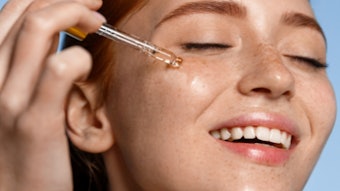
We know the skin microbiome exists, so now what? Can we affect it? Should we affect it? And how might it provide new opportunities in beauty and skin care? While to some, the skin microbiome is a marketing fad, these and other questions are being taken seriously by some sizeable beauty marketers and suppliers; some of which presented insights during the SCC Annual Meeting, held Dec. 17-18, in NYC.
Diversified Microbe Portfolio
Magali Moreau, Ph.D., principal scientist of L’Oréal, opened with the discussion of microbiome diversity; i.e., the measure of how many different microbe species are on skin, and how are they distributed. Previous work has shown the greater the diversity, the better the skin health. Here, she described tools used to make this measurement.
See related: The Skin Microbiome, A New 'Organ' and How to Leverage It
"The Shannon Index can characterize species diversity in a community, whereas PCR (polymerase chain reaction) amplification tells you how many but not 'who' is present." She added the microbiome is influenced by the host, lifestyle, immune system and environment. "What we [currently] know about the microbiome is based on our knowledge of compromised and diseased skin or dysbiosis, although this is what gives us inspiration for healthy skin care."
The Change Game
Moreau added that even in healthy skin, the microbiome varies over the course of one's life. "From the time you are born, you inherit a microbiome and you establish it within the first two years. Changes to the microbiome can occur [due to] antibiotics, hormones and with physiological aging. The skin microbiome is very different from young to old and with physiological changes—and yes, we can correlate signs of aging with changes in the microbiome."
See related: [podcast] Microbiome Interactions and Skin Health, Part I
Beyond biology, the environment can influence change in the skin microbiome. "Different urban centers give you a different mix of microbes," she explained. "So what you are exposed to can influence your microbiome." She added her team has been interested in this correlation in order to link the way skin looks and the way we perceive it with the effects of pollution.
"[We know] there’s a higher incidence of skin disease and disorder with pollution, and a higher level of squalene oxidation, etc. ...so what about the microbiome?"
'There is a functional role that differences in the microbiome have in skin ... this is where we want the next frontier to go.'
Effects of Pollution
Moreau described studies conducted in two Chinese cities with matched UV exposure levels and latitudes. Samples of hair fibers, the scalp and cheeks were taken from women in these cities in order to quantify the amount of pollutants they were exposed to. "When you pluck the hair, what’s inside the cortex keeps trace levels of everything you’ve been exposed to systemically," Moreau said, noting their findings, as expected, for higher pollutant exposures in urban area.
"Comparing qPCR to 16S metagenomics, on both counts, higher [microbe] diversity [was observed] in the higher polluted city. And, in both bacteria and fungi, the microbiome signature was distinct in one city vs. the other." She added that interestingly, a higher diversity of the minor bacteria species increased.
"From the two cities, we looked more deeply at which species were associated with which PAH (polycyclic aromatic hydrocarbons) pollutants, associated with type and amount of PAH, and we could associate biodiversity as function of the amount and type of PAH. [From this], we were able to see a strong correlation with the pollutants."
Practical Applications and Next Steps
So what do all of these findings mean for skin care and beauty? "It only matters if there’s something we can do in terms of benefits," Moreau added. "What’s important is if [the consumer] wants a solution to something they want to change in their microbiome." Here, her team focused on pigmentation with signs of aging and vacuoles—small, highly pigmented patches on the skin.
Moreau believes the next step to understanding and addressing the skin microbiome is to correlate microbe functions with signs of aging. "There is a functional role that differences in the microbiome have in skin ... this is where we want the next frontier to go. What function of the microbiome has changed with age? And what do we do with this? We must keep digging."
4 Approaches 'From Easiest to Hardest'
The industry has only begun to scratch the surface, according to Moreau, and is still figuring out which ingredients can affect the microbiome. In her view, the main approaches "from easiest to hardest" appear to be: prebiotics, then probiotics, postbiotics and finally, antibiotics. She describes each as follows.
'With the microbiome being so stable, maybe the better way to go at the microbiome is to go after its physiology.'
Prebiotics: "Small molecules, sugars, fatty acids, etc.";
Probiotics: "Live bacteria, not an extract—and very few companies are doing this, especially with the regulatory concerns they raise." The idea here is to put live bacteria back onto skin if it is missing.
Post-biotics: "These bring the function [of the missing microbes] back to help the skin's physiology"; and
Antibiotics: The idea here is that there is a “bad" microbe acting as an opportunist. "The strategy is to address the bad actor taking over; for example, phages are highly specific and keep the balance. These have high specificity with a broad spectrum. There also are phage derivatives including lysine and endolysine."
Microbiome Stability
Following Moreau, Greg Hillebrand, Ph.D., senior principal research scientist at Amway, described findings from a two year-long study. "We wanted to understand the temperal stability of the facial microbiome," he said.
Some 150 self-reported healthy subjects were enrolled and examined for the diversity of their facial microbiome compositions with aging. The team focused on porophyrins based on the hypothesis that these sequester iron and support the growth of microbes. Further, Cutibacterium acnes is known to create this molecule in hair follicles and to secrete it, and this is easily perceived as it fluoresces under black light.
"[In this way], we could measure follicles filled with porphyrins," said Hillebrand, but they found there was not enough present for the microbes to survive. He concluded, "with the microbiome being so stable, maybe the better way to go at the microbiome is to go after its physiology."
Microbiome in the Mainstream
Hillebrand also put industrial and academic interest in researching the microbiome in perspective. "The microbiome is outpacing the human genome in trendiness but the gut microbiome outpaces the skin and mouth microbiome," he said. Why the interest? "There are two big drivers: the methods to study it have enabled [this research], and costs have come down for sequencing and bioinformatics."
Hillebrand described micobiome research methods as "game-changing," noting how new understandings of the fecal microbiome, for example, have brought interesting opportunities for medical treatment. "Most inflammatory diseases we are plagued with have a microbiome component—although we are not sure if this is the cause," he said, adding there is also significant discussion of atopic dermatitis in relation to the skin microbiome. No doubt, new research will evolve in this area in the months and years to come.










